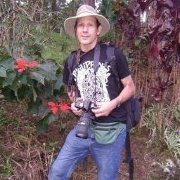[Myanmar] Burma School Offers Dose of Imagination
-
Recently Browsing 0 members
- No registered users viewing this page.
-
Topics
-
-
Popular Contributors
-
-
Latest posts...
-
6,915
-
32
Crime Aussie Murder Suspect Dies in Thailand, Evading Justice Forever
I believe this is covered in the OP, where it suggests that the investigation wasn't very good at all -
4
Shipping or Moving Boxes from U.S. to Thailand
I haven't used them but I might because I have boxes to ship from a Reno storage to Bangkok that I'm planning for next year. They're called Send2Thai. They have a branch in Vegas an 4 other west coast locations. I think you could just drop off your boxes at their branch which I think makes things a lot easier and cheaper than having to meet them at your storage but whatever. I was looking into other overseas shipping companies also and Schumacher Cargo Logisitics was one I was looking at. Their own website shows like 5000 4.5 star reviews but then on Yelp and BBB they are only 1.3 or 1.8 so not so good there. It's tough to risk your stuff without knowing if they have a solid reputation. If you find someplace good (or bad) please post back your experience, I'm searching too but I'm not interested in door to door, I just want to go back rent a truck and drop my boxes off someplace (I think they call it Port-to-Door). -
74
Tourism Thailand Tourism: Falling Behind or Ready to Evolve?
Had to add a another category to my few ignored categories: currently: Bigots, Crazies, Nazis; now forced to introduce another category SNOBS. The numbers of people on here who are convinced that that they are quality tourists/immigrants/expats and now Thailand is letting in rampaging hordes of low-quality riff-raff & other tourists (from UK & Europe, China, India) is amazing. 🤣 Should do a reality programme with these low-quality farang gammons ranting drunkings at the local bar. -
28
Crime Thai Police Chief Orders Nationwide Drug Crackdown
Cuz "drugs is good", you can't change that. People like the short term effects of recreational drugs. If coffee was outlawed only outlaws would have dolce gusto machines. Some drugs are more benign than others but nearly everyone uses some kind of mood altering drugs. -
291
Bombshell: Obama & Crew knew all along, Russia Russia was a hoax.
We will find out over the coming months. Looking forward to the lefties melting down again as their heroes fall like bowling pins.
-
-
Popular in The Pub






.thumb.jpg.4fd22303fa94eb0a6ebf5a9cf7194eb4.jpg)



Recommended Posts
Create an account or sign in to comment
You need to be a member in order to leave a comment
Create an account
Sign up for a new account in our community. It's easy!
Register a new accountSign in
Already have an account? Sign in here.
Sign In Now